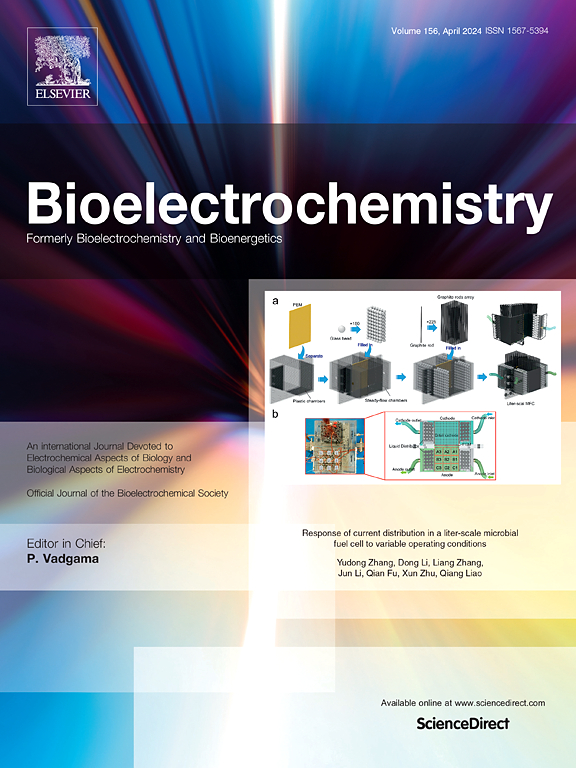Ferredoxin NADP+ reductase for NADPH and NADH regeneration in a flow bioelectrochemical reactor
IF 4.8
2区 化学
Q1 BIOCHEMISTRY & MOLECULAR BIOLOGY
引用次数: 0
Abstract
Ferredoxin-NADP+ reductase (FNR) is an efficient and selective biocatalyst to continuously regenerate the NADPH cofactor consumed in biomolecular synthesis for the chemical and pharmaceutical sectors. In this work, FNR from Chlamydomonas reinhardtii was applied to electrochemical regeneration of the nicotinamide cofactors, by combining this enzymatic catalyst in a flow reactor with the oxidation of hydrogen, a clean source of electrons and protons. FNR was immobilized on the surface of oxidized multi-walled carbon nanotubes, which allowed maintaining its activity for over six days under high flow rate. Surprisingly, this modified FNR electrode was effective not only in regenerating NADPH but also NADH. The cofactor regeneration was then applied to the NADH-dependent production of lactate from pyruvate, using L-lactate dehydrogenase (LDH) in the presence of low NAD+ concentration (10 µM). Both FNR and LDH enzymes were immobilized in the bioelectrochemical system that achieved a remarkable total turnover number (TTN) of 104 for the nicotinamide cofactor and a faradaic efficiency higher than 80 %.
求助全文
约1分钟内获得全文
求助全文
来源期刊

Bioelectrochemistry
生物-电化学
CiteScore
9.10
自引率
6.00%
发文量
238
审稿时长
38 days
期刊介绍:
An International Journal Devoted to Electrochemical Aspects of Biology and Biological Aspects of Electrochemistry
Bioelectrochemistry is an international journal devoted to electrochemical principles in biology and biological aspects of electrochemistry. It publishes experimental and theoretical papers dealing with the electrochemical aspects of:
• Electrified interfaces (electric double layers, adsorption, electron transfer, protein electrochemistry, basic principles of biosensors, biosensor interfaces and bio-nanosensor design and construction.
• Electric and magnetic field effects (field-dependent processes, field interactions with molecules, intramolecular field effects, sensory systems for electric and magnetic fields, molecular and cellular mechanisms)
• Bioenergetics and signal transduction (energy conversion, photosynthetic and visual membranes)
• Biomembranes and model membranes (thermodynamics and mechanics, membrane transport, electroporation, fusion and insertion)
• Electrochemical applications in medicine and biotechnology (drug delivery and gene transfer to cells and tissues, iontophoresis, skin electroporation, injury and repair).
• Organization and use of arrays in-vitro and in-vivo, including as part of feedback control.
• Electrochemical interrogation of biofilms as generated by microorganisms and tissue reaction associated with medical implants.
 求助内容:
求助内容: 应助结果提醒方式:
应助结果提醒方式:


